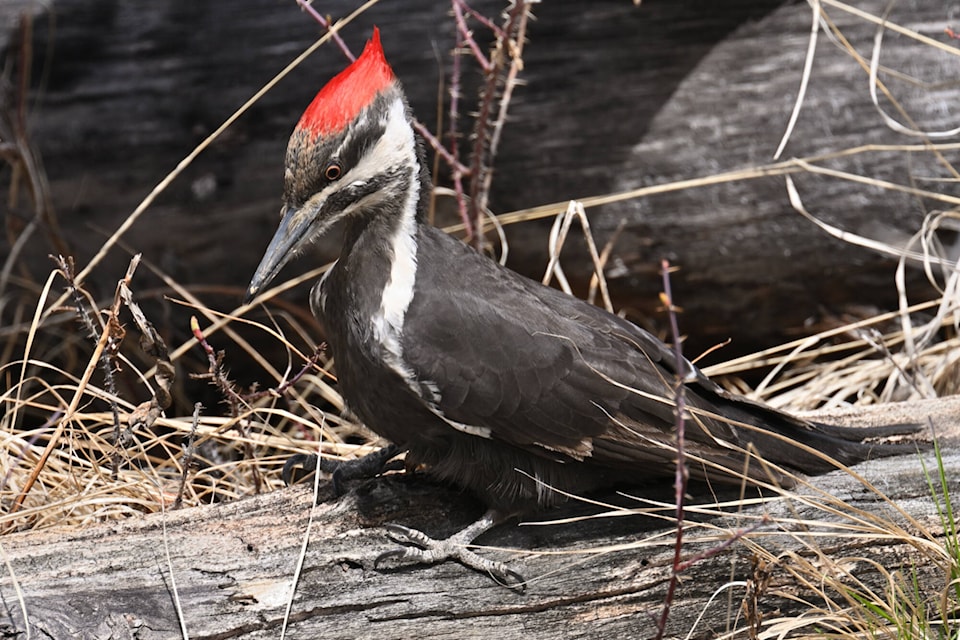By John G. Woods
Special to the Observer
With the coming of longer days and warm weather, the drummers of the bird world have been early to join nature’s spring concert.
Starring in the percussion section, woodpeckers in the Shuswap are now announcing the start of their nesting season with renditions of often-repeated drumbeats.
Why do woodpeckers drum? The most likely answer is that it helps them establish nesting territories.
Their drum-songs serve to attract potential nesting partners and serve as a warning to others of their species that a patch of woods is taken. A robin singing outside your bedroom window is doing the same when it adds its voice to the spring choir.
While you might think that woodpecker drum-songs are all the same, in fact our local species each have distinctive beats that identify their species as well as their location and probably an insight into the drummer’s individual health. With a little practice, we can eavesdrop on these conversations and identify what type of woodpecker is tapping out the tune.
It might be impossible to go through a Shuswap spring without hearing a Northern flicker (a type of woodpecker) beating on a metal chimney-cap. Choosing the right place to drum is a critical decision and flickers are quick to appreciate the amplification possibilities of our metal structures.
At 25 hard-struck beats per second, flicker-drumming can be amplified down your chimney and into your house where it produces a roaring blur of sound that will wake many of us up this spring! Heard from the outside, this is music to a female flicker’s ears.
The number of beats per second and the timing of each beat are the keys to learning to tell woodpeckers apart by their drum-songs. If you can flutter your tongue against the roof of your mouth (try it!), the blur of sound is typically about 25 flutters per second. This speed is way too fast to count and makes the species either a flicker or a hairy woodpecker.
Read more: Column: Salmon Arm Bay provides a bonanza for migrating shorebirds
Read more: Column: Seeing eye-to-eye with a chickadee on Salmon Arm’s Foreshore Trail
If the beats are even-paced and much slower (about 15 per second) your bird is downy woodpecker. Compared with the highspeed drumming of flickers, downies are noticeably slower. Another downy song-test is to attempt counting the number of individual beats. I usually get to about six before giving up. By contrast, I wouldn’t even try to count drumbeats of the high-speed species.
In my most-amazing woodpecker drum-song playlist, the pileated woodpecker is in the top category in terms of both loudness and delivery style. Their drum-song has a rolling quality – speeding up and slowing down. And this woodpecker is usually very choosy in picking out just the right spot on a resonating tree trunk that gives their drumming lots of volume.
Like all woodpeckers, our red-naped sapsuckers have chisel-shaped bills and tough, wonderfully designed skulls that protect their brains from the constant head-hammering. Unlike our other woodpeckers, sapsuckers specialize in drilling small rows of shallow holes in tree bark that causes sap to bleed. Sapsuckers often return to these drill sites to lick up the sugary fluid and to eat any insects lured in by the chance for a sweet sip.
Sapsuckers deliver what I think of as the jazziest of all the woodpecker drum-songs. After a series of relatively slow beats tapped in an uneven cadence, their tune ends in a distinctively hesitant delivered lick of two or three beats.
Rat-a-ta-tat—tat—tat!
newsroom@saobserver.net
Like us on Facebook and follow us on Twitter
